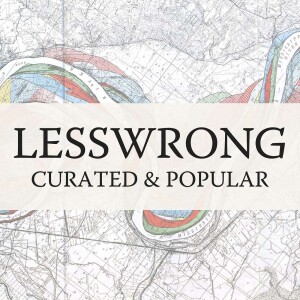
“The ‘strong’ feature hypothesis could be wrong” by lsgos
 2024-08-07
2024-08-07
Download
Right click and do "save link as"
NB. I am on the Google Deepmind language model interpretability team. But the arguments/views in this post are my own, and shouldn't be read as a team position.
“It would be very convenient if the individual neurons of artificial neural networks corresponded to cleanly interpretable features of the input. For example, in an “ideal” ImageNet classifier, each neuron would fire only in the presence of a specific visual feature, such as the color red, a left-facing curve, or a dog snout” : Elhage et. al, Toy Models of Superposition
Recently, much attention in the field of mechanistic interpretability, which tries to explain the behavior of neural networks in terms of interactions between lower level components, has been focussed on extracting features from the representation space of a model. The predominant methodology for this has used variations on the sparse autoencoder, in a series of papers [...]
---
Outline:
(09:56) Monosemanticity
(19:22) Explicit vs Tacit Representations.
(26:27) Conclusions
The original text contained 12 footnotes which were omitted from this narration.
The original text contained 1 image which was described by AI.
---
First published:
August 2nd, 2024
Source:
https://www.lesswrong.com/posts/tojtPCCRpKLSHBdpn/the-strong-feature-hypothesis-could-be-wrong
---
Narrated by TYPE III AUDIO.
---
view more
“It would be very convenient if the individual neurons of artificial neural networks corresponded to cleanly interpretable features of the input. For example, in an “ideal” ImageNet classifier, each neuron would fire only in the presence of a specific visual feature, such as the color red, a left-facing curve, or a dog snout” : Elhage et. al, Toy Models of Superposition
Recently, much attention in the field of mechanistic interpretability, which tries to explain the behavior of neural networks in terms of interactions between lower level components, has been focussed on extracting features from the representation space of a model. The predominant methodology for this has used variations on the sparse autoencoder, in a series of papers [...]
---
Outline:
(09:56) Monosemanticity
(19:22) Explicit vs Tacit Representations.
(26:27) Conclusions
The original text contained 12 footnotes which were omitted from this narration.
The original text contained 1 image which was described by AI.
---
First published:
August 2nd, 2024
Source:
https://www.lesswrong.com/posts/tojtPCCRpKLSHBdpn/the-strong-feature-hypothesis-could-be-wrong
---
Narrated by TYPE III AUDIO.
---
Images from the article:
Apple Podcasts and Spotify do not show images in the episode description. Try Pocket Casts, or another podcast app.
Apple Podcasts and Spotify do not show images in the episode description. Try Pocket Casts, or another podcast app.
More Episodes
0123456789101112131415161718
Create your
podcast in
minutes
- Full-featured podcast site
- Unlimited storage and bandwidth
- Comprehensive podcast stats
- Distribute to Apple Podcasts, Spotify, and more
- Make money with your podcast
It is Free
- Privacy Policy
- Cookie Policy
- Terms of Use
- Consent Preferences
- Copyright © 2015-2024 Podbean.com





